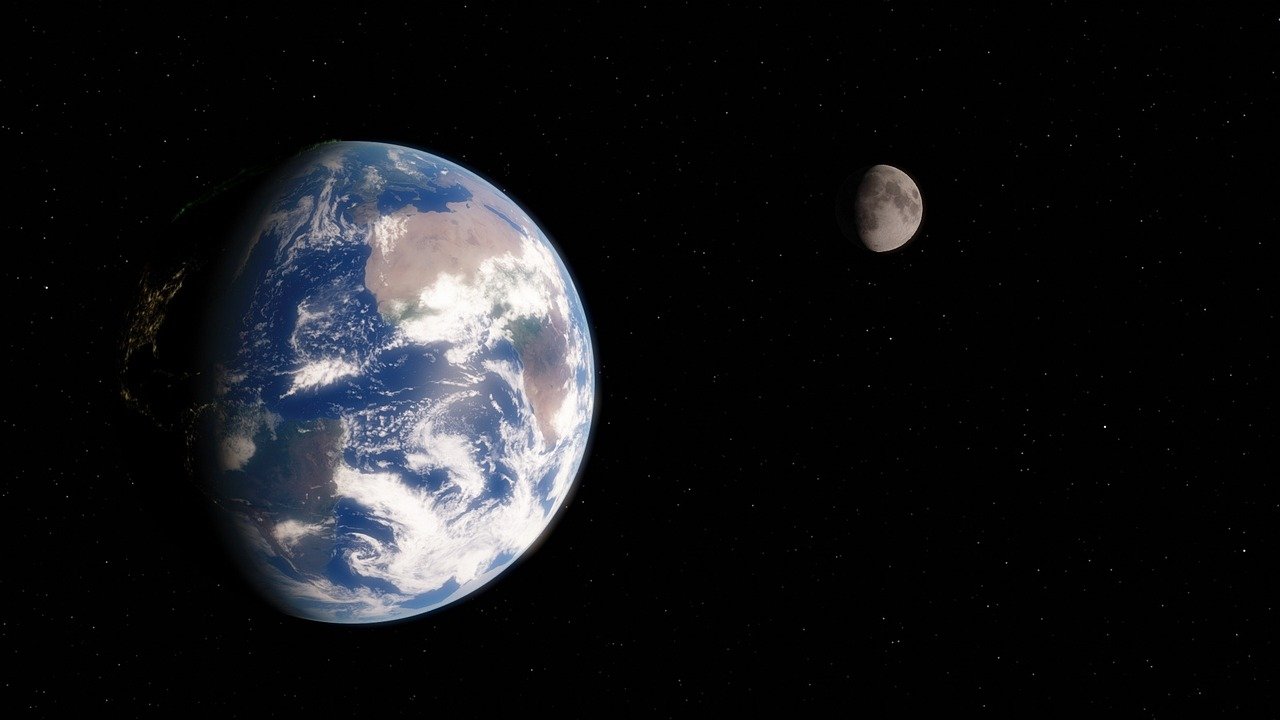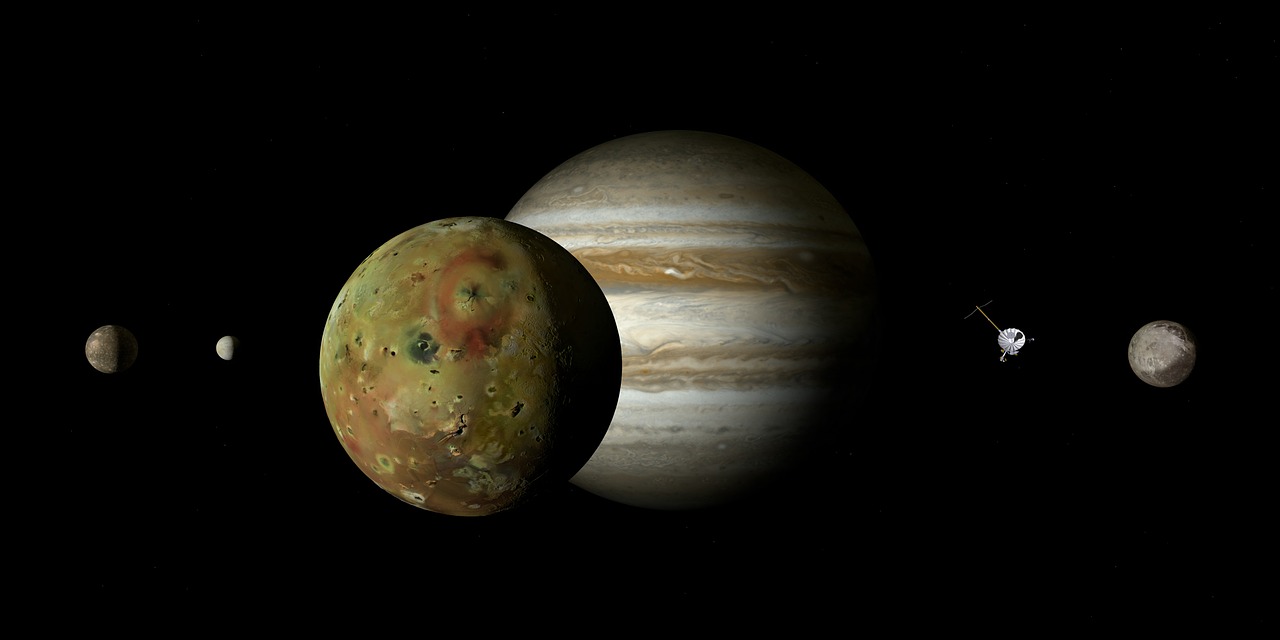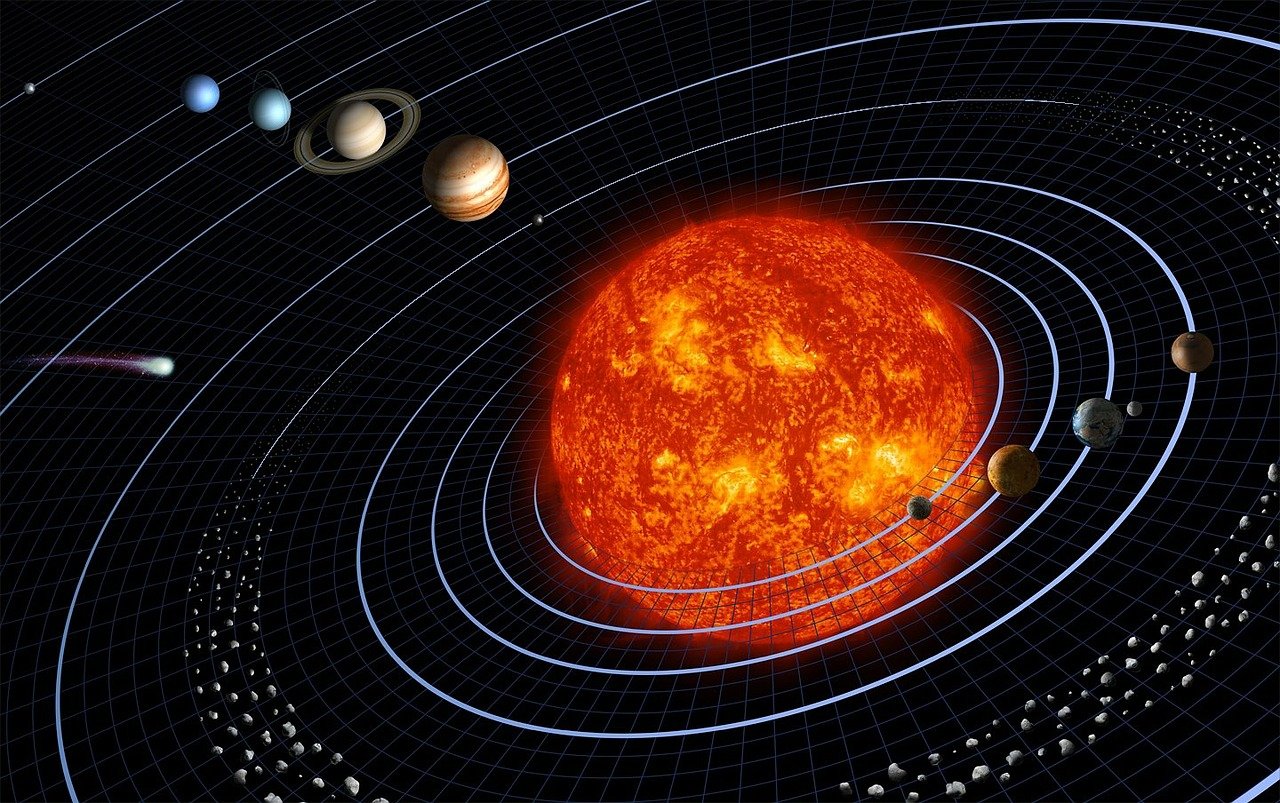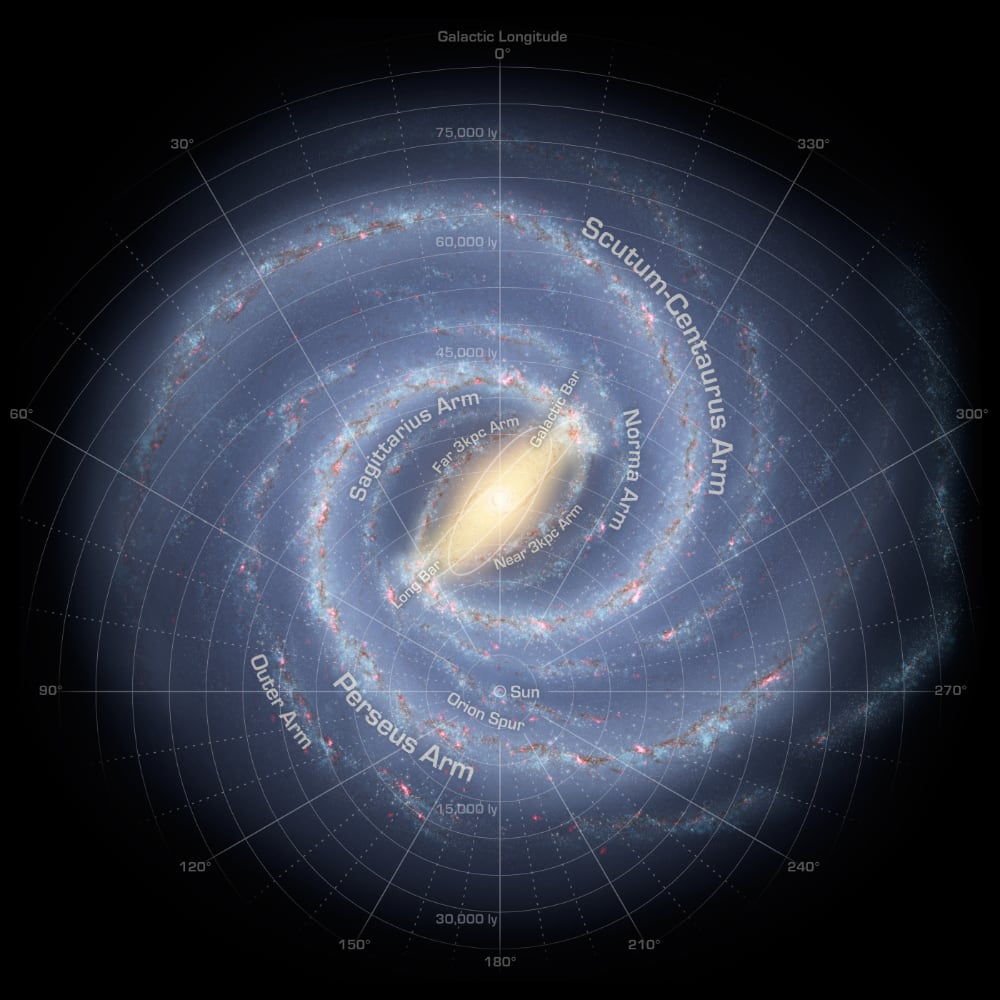Us and the Universe

Have you ever wondered how large the universe is? If we could travel out into space, would we come to the end and be forced to turn back? Or would we simply travel on indefinitely? The truth is, no one knows for sure. We know the universe is staggeringly large — and that it’s even expanding — and we know we’re just a tiny part of it, but it’s hard to imagine just how small we are compared to the rest of the cosmos. Or is it?
Understanding Our Neighborhood
Imagine you’re an ant. You might live in the grass, and all that you’ll see are the tall, green blades of grass towering above you. From time to time you might see giant creatures striding past and they might seem impossibly large to you.
Far, far away in the distance, in the sky above you, there’s a blinding white light. You don’t know what it is, but it moves across the sky. When it’s high overhead, everything is bright, but when it’s below the horizon everything turns dark.
You have no idea you’re crawling across the surface of a planet, which orbits a star itself orbiting the center of a galaxy that contains billions of other stars and planets. More than this, you have no idea that our galaxy, the Milky Way, is just one of trillions in the known universe.
That might be the view of an ant, but that’s pretty much how our ancestors saw the universe too. They could see the Sun, Moon and planets in the sky, but had no idea what they were, or the size of the universe that surrounded them. It’s no wonder they considered the Sun, Moon and planets to be gods.
From the Earth to the Moon

Pixbay
Our ancestors had no idea that the Moon is a world in its own right, or that it’s roughly a quarter the size of the Earth. They might have imagined visiting this strange place, but it wouldn’t be until July 1969 that we humans would actually make the trip. At an average distance of roughly a quarter of a million miles, it would take the Apollo astronauts three days to get there. They were travelling through space at an average speed of 3,400 miles per hour (roughly 5,472 kmh) – and you thought your parents drove fast!
What if you tried driving to the Moon? Let’s say you could drive there in a car at a constant 60 miles per hour (roughly 95 kmh). It would only take you about an hour to reach space, but it would take you nearly 166 days to reach the Moon.
Jupiter, Giant of the Planets

Reimund Bertrams
While the Earth seems like a very big place to us, it’s not the largest planet in the solar system. That honor belongs to Jupiter, the fifth planet from the Sun. Jupiter is so large it could fit all the other planets within it. If that doesn’t mean much, imagine how many Earths could fit inside it. Ten? Twenty? A hundred? The fact is, if Jupiter were an empty sphere, it could hold 1,300 Earths!
Jupiter also has huge storms that dwarf anything you might find here on Earth. Its most famous storm is the Great Red Spot, a hurricane-like feature that’s torn through the planet’s atmosphere for centuries. Wind speeds can reach over 400mph (nearly 645 kmh), while the storm itself is large enough to swallow the entire Earth whole. Twice.
Jupiter is much farther away than the Moon – about 1,650 times farther away – and it would take you over 750 years to drive there. What if you could travel at the speed of light? Light travels at 186,282 miles per second, or more than 670 million miles per hour (299,792 kmh). If you could travel that fast, it would take about 35 minutes to reach Jupiter (assuming the Earth and Jupiter were at their closest.)
Here’s something that will make you think: it also takes light at least 35 minutes to reach us from Jupiter. This means that when you look at the planet from the Earth, you’re seeing it as it was 35 minutes ago – not as it is right now.
The Sun, Our Nearest Ordinary Star

WikiImages
What about the Sun? At an average distance of 92 million miles (148059648 km), it’s a lot closer than Jupiter. Light from the Sun takes about eight minutes to reach us, and if you thought Jupiter was large, it’s nothing compared to the Sun.
Jupiter may be able to hold 1,300 Earths within it, but the Sun could hold 1,000 Jupiters. In fact, the Sun is big enough to hold everything in the solar system within it. That’s eight planets, hundreds of moons and millions of asteroids and comets.
The Sun itself is not considered a large star. In fact, it’s size is pretty average, but its gravity is still strong enough to hold all those other objects in its grasp, causing the Sun’s influence to stretch pretty far out into space. Astronomers consider the distance from the Earth to the Sun to be 1 Astronomical Unit (AU) and believe the edge of the solar system lies about 100,000 AUs away.
That’s a little more than one and a half light years. In other words, if you were looking at the Sun from that distance, you’d be seeing it as it was about 18 months ago. Proxima Centauri, the nearest star to our own, is just under four and a quarter light years away. Proxima is a “red dwarf” star and smaller than the Sun, but there are other, much larger stars you can see in the sky.
The Red Giants That Dwarf All Others

Star vector created by brgfx - www.freepik.com
Besides red dwarves, the galaxy has plenty of “red giant” stars too. For example, both Betelgeuse in the constellation of Orion, the Hunter, and Antares, the red heart of Scorpius, the Scorpion, are about 700 times larger than the Sun. If they were placed at the center of our solar system, they would probably stretch to the orbit of Jupiter, swallowing the planets Mercury, Venus, Earth and Mars in the process.
That’s nothing compared to another red giant star, VY Canis Majoris. Despite being too faint to be seen with the naked eye, it’s estimated to be over 1,400 times larger than the Sun. It would take you six hours to fly about the star’s circumference at the speed of light, compared to just 14.5 seconds for the Sun.
VY Canis Majoris is thought to be about 3,900 light years away. It might sound like a lot, but the reality is that it’s still pretty close. The Earth, the Sun and every single star you can see in the night sky are all contained within our own Milky Way galaxy, and the Sun orbits the center of the galaxy at a distance of roughly 25,000 light years.
Countless Stars and Strange New Worlds

The galaxy itself is commonly thought to be about 100,000 light years across (although recent research indicates it could be as much as four times that size) and may contain between 100 and 400 billion stars. To date, we have confirmed the existence of over 4,000 other planets and it’s estimated that 70% of all stars could have planets, with at least one in six stars having an Earth-sized planet.
If there are just 100 billions stars in our galaxy, that means there could be nearly 17 billion Earth-sized worlds in the Milky Way alone.
But, of course, that’s just our own galaxy. The Milky Way belongs to a group of galaxies called the Local Group. It’s one of the larger galaxies in the group, but it’s certainly not the largest. That honor belongs to the Andromeda Galaxy.
At a distance of two and a quarter million light years, the Andromeda Galaxy is the furthest object you can easily see with just your eyes. You see it just as it was when the first humans started to walk upon the Earth and all of human history had yet to happen.
The Andromeda Galaxy is about twice the size of the Milky Way and could contain a trillion stars. That’s 1,000 million stars and, potentially, 167 billion Earth-sized planets. There could be as many (or more) Earth-sized planets in the Andromeda Galaxy as there are stars in the Milky Way!
There are 30 galaxies in the Local Group, spanning some 9.8 million light years across space. The Local Group is itself a member of the Virgo Supercluster of galaxies, which contains 100 galaxy groups and has a diameter of some 110 million light years. More than that, the Virgo Supercluster is just one of 10 million galactic superclusters in the known universe, containing a potential total of two trillion galaxies within them.
The Long Road Ahead
And if we could travel out into the universe, how far could we go? Our telescopes have seen objects as far as 13.3 billion light years away. The Earth formed about 4.6 billion years ago, so it would take you three times longer to reach that distance at the speed of light.
We’ve come a long way over the course of the past two and a half million years, since our ancestors first walked upon the Earth. We may not be ants, but we might as well be. We are small, and to the greater universe we may be insignificant, but there’s a vast, unknown universe ahead of us and we have a long, long way to go.






